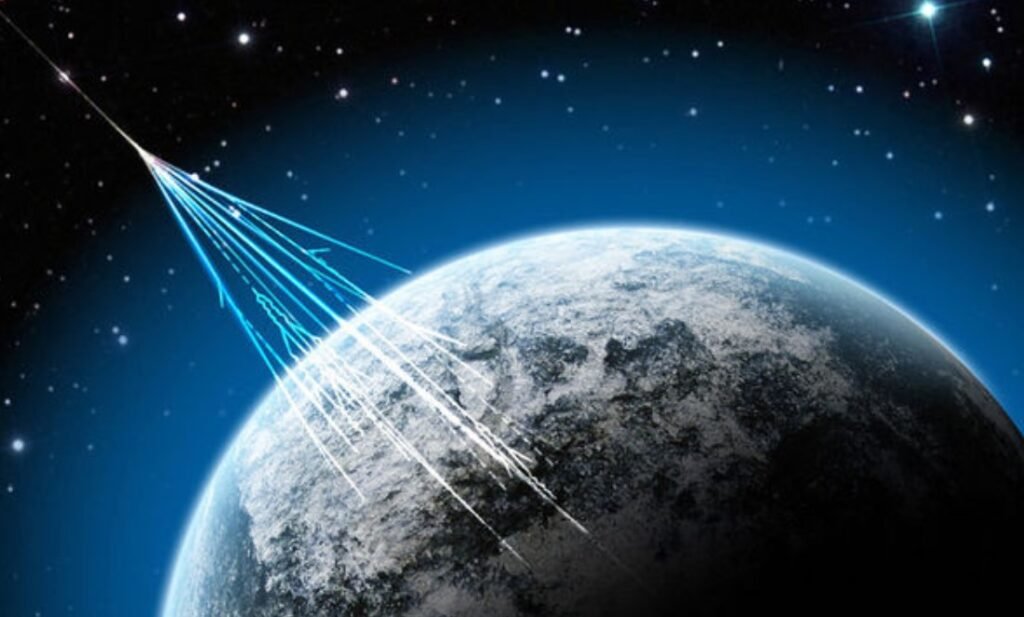Cosmic rays are high-energy particles that travel through space at nearly the speed of light. They originate from various sources, such as supernova explosions, active galactic nuclei, and gamma-ray bursts. Some of them are so powerful that they can reach energies of over a quadrillion electron volts (PeV), which is more than a million times higher than the most powerful particle accelerator on Earth, the Large Hadron Collider (LHC).
Scientists have been studying cosmic rays for over a century, but they still do not fully understand their origin, composition, and propagation. Cosmic rays are also difficult to detect, because they are deflected by magnetic fields and interact with matter in the interstellar medium. However, some of them produce secondary particles, such as gamma rays and neutrinos, that can be observed by telescopes and detectors on Earth and in space.

Cosmic Rays and Gamma Rays
Gamma rays are the most energetic form of electromagnetic radiation, with wavelengths shorter than a trillionth of a meter. They are produced by various astrophysical phenomena, such as black holes, neutron stars, and pulsars. Gamma rays can also be emitted by cosmic rays when they collide with other particles or photons in the cosmic microwave background, the relic radiation from the Big Bang.
Gamma rays can reveal important information about the sources and properties of cosmic rays, such as their energy spectrum, composition, and spatial distribution. However, gamma rays also face challenges in their detection, such as the absorption by the intergalactic medium and the background noise from the Earth’s atmosphere. Therefore, scientists use different types of instruments to observe gamma rays, such as satellites, air showers, and Cherenkov telescopes.
Cosmic Rays and Neutrinos
Neutrinos are elusive particles that have very little mass and interact very weakly with other matter. They are produced by nuclear reactions in stars, supernovae, and the Sun, as well as by cosmic rays when they interact with nuclei in the interstellar medium. Neutrinos can also be created by the decay of other particles, such as pions and kaons, that are generated by cosmic rays.
Neutrinos can provide complementary information to gamma rays about the sources and properties of cosmic rays, such as their flavor, direction, and energy. However, neutrinos are also challenging to detect, because they can pass through matter without leaving any trace. Therefore, scientists use large-scale detectors, such as ice or water tanks, to capture the faint signals of neutrinos.
Cosmic Rays and the Universe
Cosmic rays are not only fascinating objects of study, but also powerful probes of the universe. They can help us understand the origin and evolution of cosmic structures, such as galaxies, clusters, and filaments. They can also test the fundamental laws of physics, such as the speed of light, the quantum vacuum, and the nature of dark matter and dark energy. Moreover, they can reveal new phenomena and particles that are beyond the reach of conventional experiments.
Cosmic rays are the key to unlocking the mysteries of the universe, but they also pose many challenges and questions. How are they accelerated to such extreme energies? What are their sources and composition? How do they propagate and interact in the intergalactic and interstellar space? How do they affect the environment and life on Earth? These are some of the questions that scientists are trying to answer with the help of advanced instruments and technologies.
Category: Science Meta Description: Cosmic rays are high-energy particles that travel through space at nearly the speed of light. They can help us understand the origin and evolution of the universe, but they also pose many challenges and questions. Slug: cosmic-rays-unlocking-universe-mysteries
